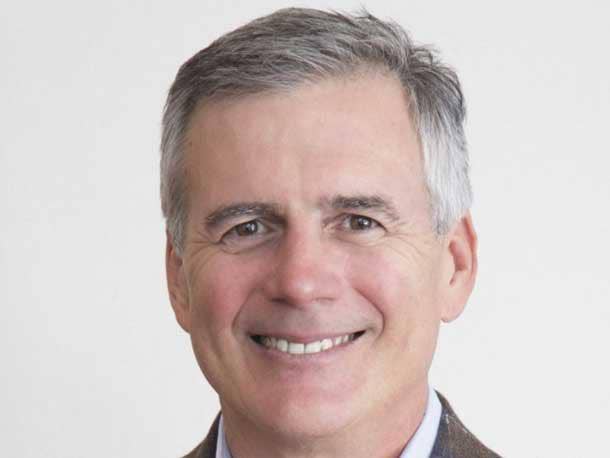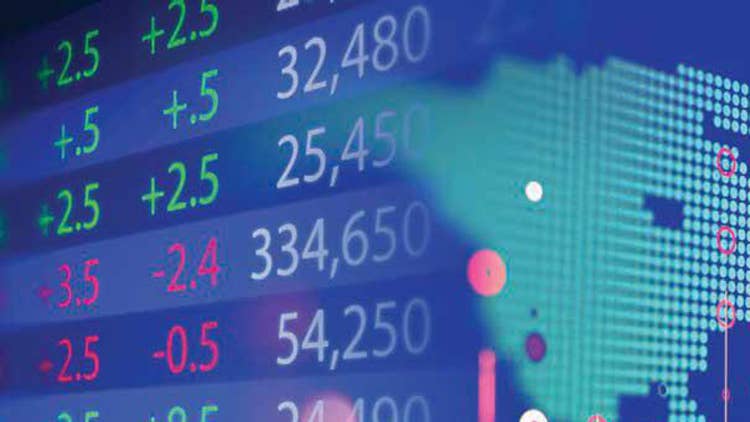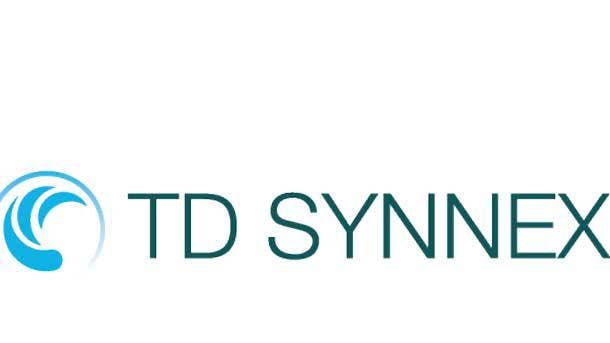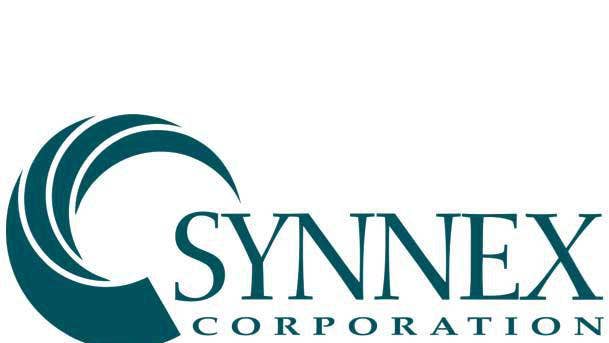TD Synnex CEO Rich Hume: ‘We’re Investing In The Foundational Technologies For Digital Transformation’
‘Our investment in high-growth technologies—cloud, analytics, IoT, security, hyperscale technology, all of these categories—remains really strong, much stronger than the average growth rates in IT. And we’re continuing to invest in those areas and really benefit from accelerated growth in those areas,’ says TD Synnex CEO Rich Hume.

Strong Quarter For TD Synnex
TD Synnex, formed last fall through the merger of Tech Data and Synnex to become the IT world’s largest distributor, Tuesday reported $15.3 billion in revenue for the second fiscal quarter, up 161 percent over the same quarter last year if one excludes the revenue of Synnex, or up 4 percent if the two companies’ combined revenue was included. That was $20 million more than analysts expected, according to Seeking Alpha.
The company also reported GAAP net income of $148.9 million, or $1.55 per share, and non-GAAP net income of $262.3 million, or $2.72 per share, which was 7 cents per-share higher than analysts expected, according to Seeking Alpha
For Rich Hume, CEO of Fremont, Calif.-based TD Synnex, the quarter shows the strength of the company in challenging times. TD Synnex, like the rest of the IT industry, is being buffeted by supply chain issues, inflation, and the shift from the work-from-home days during the pandemic when PC and personal device sales soared and data center sales stagnated to the post-pandemic environment where the opposite is true.
“During the pandemic, the advanced solutions were typically project deployments,” Hume told CRN. “And since people were not physically in [the office], a lot of that got deferred. So there’s been a pretty good level of pent-up demand that I think will be fulfilled throughout this year and the beginning of next year.”
Despite all the changes in the IT environment, TD Synnex’s investment in high-growth technologies such as the cloud, analytics, IoT and security will continue to grow faster than that of the industry as a whole, Hume said.
“The reason is, these are the foundational technologies for digital transformation,” he said. “And that is in demand within the end-user customer set all the way back through the business partner ecosystem. So we will stay steadfastly focused on not only building out those businesses, but the capabilities and the platforms required to make sure that we continually provide better support for the channel.”
Here is what Hume had to say on a range of issues, including how the macroeconomic and geopolitical environments are impacting the IT industry and TD Synnex in particular.

It was interesting to see TD Synnex post revenue for its fiscal second quarter 2022 of $15.3 billion, up 161 percent over last year’s revenue of $5.9 billion. Last year’s number did not include revenue from Synnex. What was the actual comparison with last year?
In the earnings call what we said was at constant currency, as we brought the two companies together, there were some accounting adjustments that happened revenue-wise. When you take a look at that adjusted revenue, it was up about year on year 4 percent.
Do you consider that 4 percent growth a good number for distribution?
Yeah, certainly under the current market circumstance we would. You have to remember that the first half of last year had some fairly extraordinary growth. So it was a bit of a challenging compare. When we take a look at the back half [of the year], we provided revenue guidance for the coming [third fiscal] quarter ... adjusted for currency and then again for the combined company accounting changes around the 10 percent range. That would at the midpoint of the guidance. So yeah, we’re very happy. The revenue was pretty much consistent with the market expectation. Actually, if you were to take into account the currency weakening that occurred, it was actually a bit better than the market expectation. And so yeah, we would call it a very solid quarter, a very good quarter.

What were the biggest strengths and weaknesses TD Synnex saw during the second fiscal quarter 2022 versus last year?
We had a point of view that we’ve been carrying since the start of the year that the PC category would moderate because the work-from-home demands were quite high. So from a growth rate perspective, we said that they would moderate, and that the advanced solutions segment, which would be data center and infrastructure, would have strength. And in fact, that’s what we saw. Both PCs, we call it endpoint solutions, and advanced solutions at constant currency, had growth. But the advanced solutions had more growth.
And what was behind the advanced solutions growth?
So part of it is, during the pandemic, the advanced solutions were typically project deployments. And since people were not physically in [the office], a lot of that got deferred. So there’s been a pretty good level of pent-up demand that I think will be fulfilled throughout this year and the beginning of next year.

hacker attack and data breach, information leak concept, futuristic cyber background with broken lock
How did supply chain issues impact TD Synnex this last quarter?
There was a lot of concern in the industry widely about shutdowns that had occurred in parts of China, and what I would tell you is that for the quarter our supply was consistent with what we thought it would be. So whatever shutdowns occurred, for the most part they were sort of made up across all of the supply and we got about the supply we thought we would get.
Has TD Synnex explored alternative sources of products and technologies other than from China given that China has been the big source of technology for years but is now also the key sticking point in the current supply chain situation?
So as you know, we have 1,500 really very premier vendors in our vendor portfolio, and decisions to reposition supply chains are largely with them as opposed to us. And so my guess is that some of them certainly either have made moves or are contemplating moves. That would be the way I think about it.
How has the supply chain impacted pricing to your channel partners?
Over the last year and a half, prices have gone up from the vendors, which ultimately gets flowed through the entire distribution chain to resellers and to end users. I was asked today [during the conference call], ’Do you anticipate that price increases will continue?’ And the only way that I could respond to that logically was, if inflation continues, then increases will continue as well. And that’s the way I think about it. So if the cost of producing and delivering the products gets more expensive, then that’ll be reflected ultimately in the pricing.

Between inflation and other issues, there's a lot of talk about a potential recession in the U.S. Is that something that TD Synnex is planning for? And if so, what are you doing in terms of what might happen in a recession?
We’re watching the market very carefully. So far, we haven’t seen a major change in the trajectory of demand. We have the benefit of a kind of understanding where we’re at on a daily basis. And what we’re hearing from our channel partners is that demand remains reasonably intact. To the extent that changes, certainly we’ll change as well. We have the benefit in our history of seeing a counter-cyclical activity occur with our distribution model whereby if the market begins to decline, then our working capital needs to reduce, and usually a lot of cash is produced. So a lot of times in recessionary periods, liquidity becomes an issue for companies at large. But within the distribution segment, we have experienced in the past that we don’t have that issue. When things go down, the cash comes in. And we have really good liquidity overall. So it’s what is called a ’counter-cyclical business model,’ which is beneficial in downtimes. We would make the necessary business adjustments. We have a very variable cost structure. We’d make the necessary adjustments to make sure that we realigned and then really get focused on our return on invested capital by carefully managing our working capital needs as well.
How is the Russian war on Ukraine impacting TD Synnex?
It’s not impacting us directly by any means. We did not have a presence in the Ukraine or Russia. And what I would tell you is that, if there are implications, they’re greater macro, economic and geopolitical considerations that would affect all markets and everything. I think that my crystal ball says that the market is a little bit slower in Europe than it is in the U.S., and perhaps those things are the reasons why.

The merger of Tech Data and Synnex was on Sept. 1. How has the integration of the company's product lines gone? Have you done any rationalization in terms of vendors and services to reflect bringing two big companies together into one?
So first of all, regarding the integration of the entire company, we’re doing really well. We’re either on or ahead of schedule across all of our different initiatives. And second, I’m proud to continue to report that vendor and customer sentiment has been super positive. We really are focused on making sure that we maintain that status with them. And generally speaking, our view is as long as you’re taking care of their needs in a really productive way, the relationships will continue to be strong. But I’d have to say that I’m really, really pleased with the vendor and customer sentiment around TD Synnex.
Have you done any rationalization of the product lines? In other words, where there overlapping products from multiple vendors? Have you started consolidating the number of lines that you carry?
No. In fact, the benefit is that there are some things that legacy Tech Data had that Synnex didn’t. So we get to take those offerings to the legacy Synnex customers. And the reverse is true. There were things that Synnex had that Tech Data hadn’t that we were able to take to Tech Data customers. So we saw that as a good opportunity. But no, we aren’t reducing any vendor lines in any meaningful ways.

You came to TD Synnex from the Tech Data side. Do you have an example of something that Synnex had that enhanced Tech Data’s partner offerings?
What I would say is, without getting too vendor-specific, is Synnex had a much more robust security portfolio. So we get to take all of the increments of that security portfolio to the Tech Data customers. On the other side, Tech Data had a much more robust data center portfolio, which we can now take to the Synnex customers.
For the rest of 2022, what are some of the key areas that TD Synnex is investing in to continue growth?
My storyline stays the same. And that is our investment in high-growth technologies—cloud, analytics, IoT, security, hyperscale technology, all of these categories—remains really strong, much stronger than the average growth rates in IT. And we’re continuing to invest in those areas and really benefit from accelerated growth in those areas. The reason is these are the foundational technologies for digital transformation. And that is in demand within the end-user customer set all the way back through the business partner ecosystem. So we will stay steadfastly focused on not only building out those businesses, but the capabilities and the platforms required to make sure that we continually provide better support for the channel.